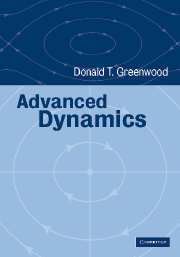4 - Equations of motion: differential approach
Published online by Cambridge University Press: 05 June 2012
Summary
In the previous chapters, we have considered relatively familiar methods of obtaining the differential equations of motion for a mechanical system. In this chapter, we shall introduce a number of other methods, partly in order to give the student a broader view of dynamics, and partly to present some practical and efficient approaches to obtaining the differential equations of motion. The results presented here are applicable to holonomic and nonholonomic systems alike, but the emphasis will be on nonholonomic systems because greater insight is needed in finding applicable theoretical approaches for these systems. As we proceed, we will show the advantages of using quasi-velocities in the analysis of nonholonomic systems.
Quasi-coordinates and quasi-velocities
Transformation equations
It is often possible to simplify the analysis of dynamical systems by using quasi-velocities (us) rather than qs as velocity variables. An example is the use of Euler's equations for the rotational motion of a rigid body. Here the velocity variables are the body-axis components of the angular velocity ω rather than Euler angle rates. The ω components are quasi-velocities, whereas the Euler angle rates are true qs whose time integrals result in generalized coordinates. As we showed in Chapter 3, the Euler equations are simpler than the corresponding Lagrange equations written in terms of Euler angles and Euler angle rates.
Information
- Type
- Chapter
- Information
- Advanced Dynamics , pp. 217 - 288Publisher: Cambridge University PressPrint publication year: 2003
